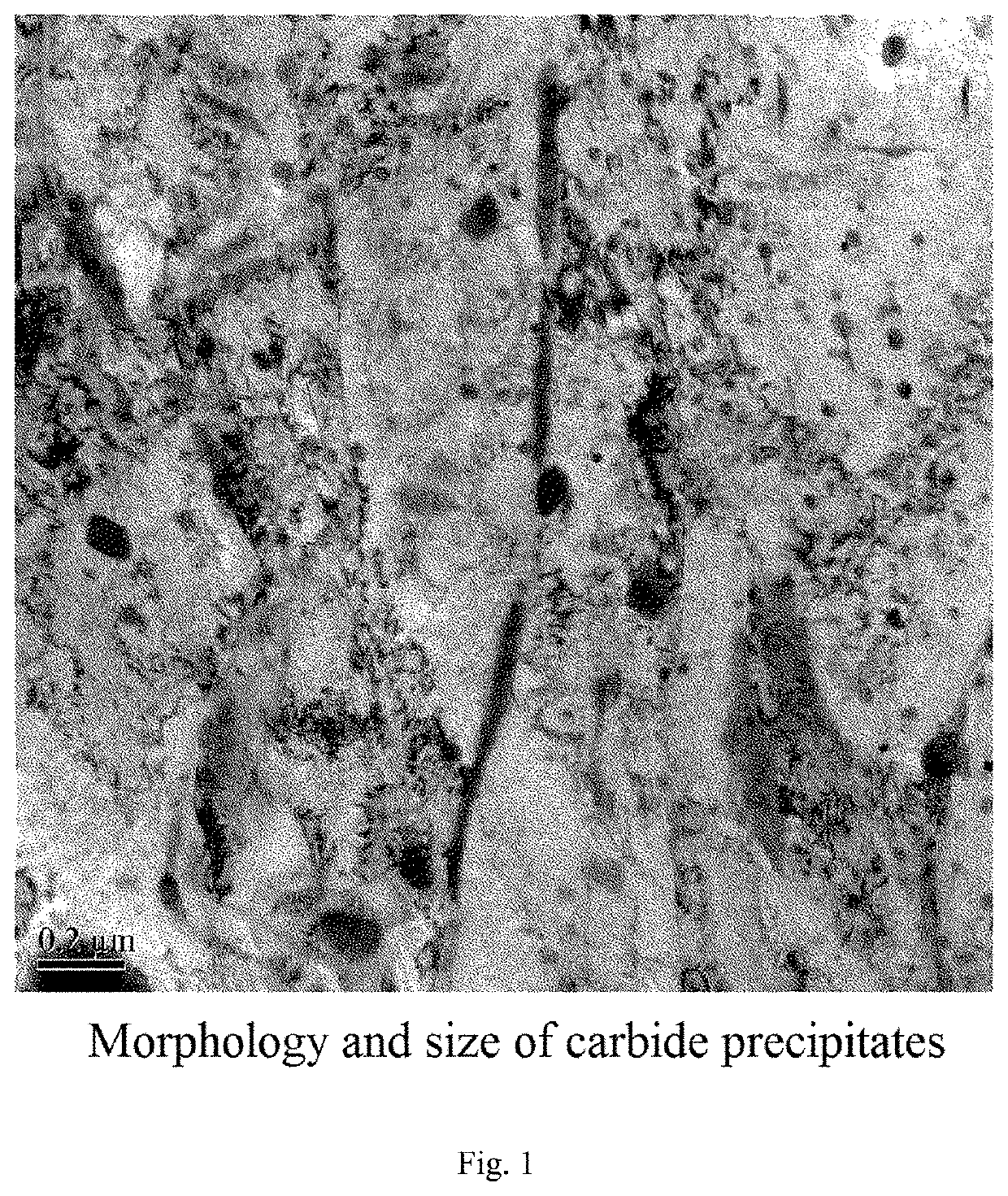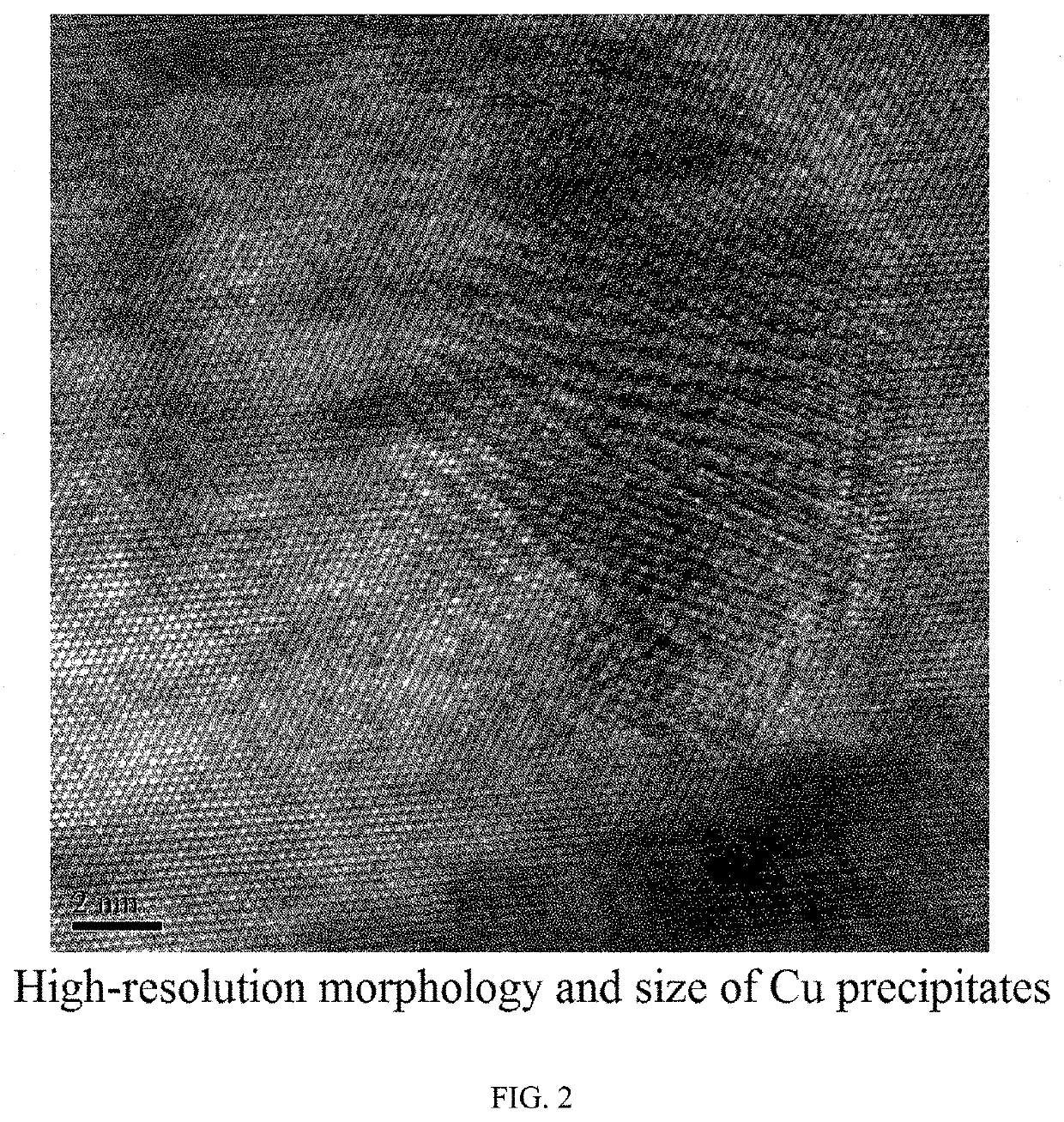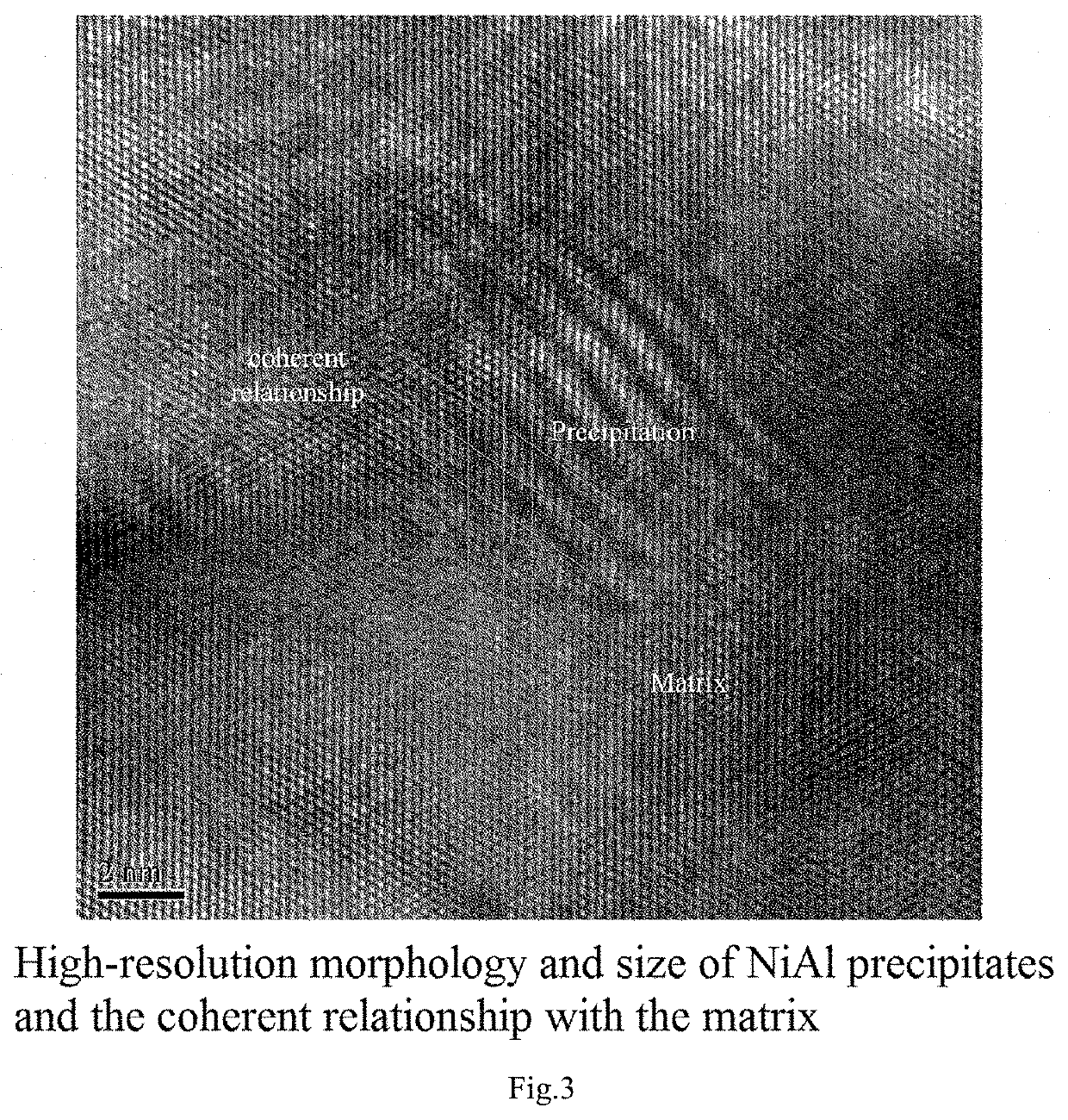Hot-working die steel, heat treatment method thereof and hot-working die
- Summary
- Abstract
- Description
- Claims
- Application Information
AI Technical Summary
Benefits of technology
Problems solved by technology
Method used
Image
Examples
Embodiment Construction
[0049]The technical solution of the present invention will be described below with reference to the embodiments.
[0050]The chemical composition of the steel used for a hot-working die in the present invention comprises by weight percentage: Cu: 2˜8%, Ni: 0.8˜6%, and Al: 0˜3%. In addition to the above components, its alloying composition also comprises: C: 0˜0.2%, Mo: 0˜3%, W: 0˜3%, Nb: 0˜0.2%, Mn≤0.8, Cr≤1.0, and satisfying Ni:Cu≥0.4, Ni:Al≥2, (Mo+W)<6%, Mo:1 / 2 W≥0.5, (Mo+W):2 / 3 C is in the range of 8˜35, the balance of Fe and other alloying elements and impurities. The functions and proportions of the elements in the present invention are as follows.
[0051]Cu: As a good conductor of heat, pure copper has thermal conductivity of 398 W / mK, while pure iron only 80 W / mK. The solubility of Cu is very high in a face-centred cubic phase (austenite), but very low in a body-centred cubic phase (ferrite and martensite), so elemental copper can be sufficiently precipitated in a large amount (as...
PUM
| Property | Measurement | Unit |
|---|---|---|
| Temperature | aaaaa | aaaaa |
| Temperature | aaaaa | aaaaa |
| Temperature | aaaaa | aaaaa |
Abstract
Description
Claims
Application Information
 Login to View More
Login to View More - R&D
- Intellectual Property
- Life Sciences
- Materials
- Tech Scout
- Unparalleled Data Quality
- Higher Quality Content
- 60% Fewer Hallucinations
Browse by: Latest US Patents, China's latest patents, Technical Efficacy Thesaurus, Application Domain, Technology Topic, Popular Technical Reports.
© 2025 PatSnap. All rights reserved.Legal|Privacy policy|Modern Slavery Act Transparency Statement|Sitemap|About US| Contact US: help@patsnap.com



